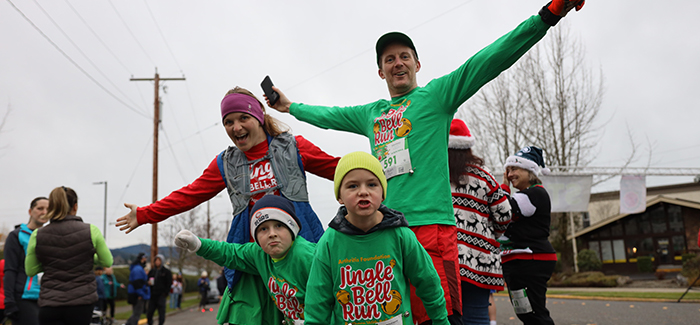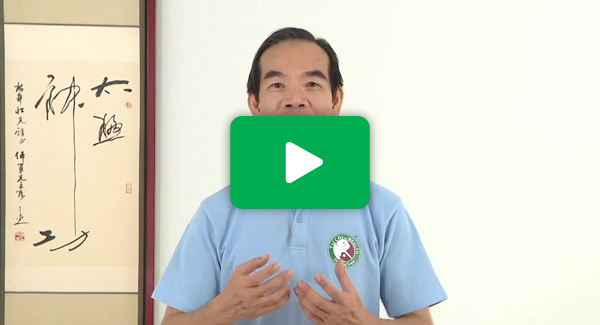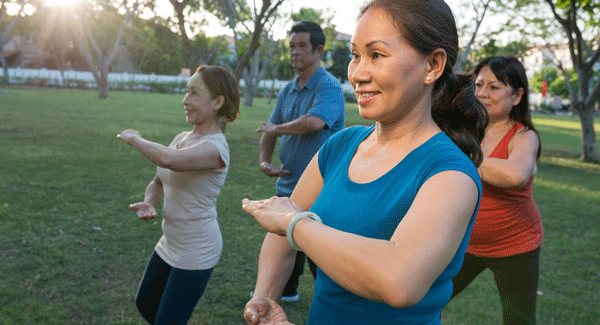14 Ways to Work Out With Arthritis
Get help finding your preferred joint-friendly exercise for arthritis to help get you moving, relieve pain and make joints more flexible.
When your joints hurt, you’re probably not eager to exercise – even though you’ve heard time and time again that you should. Not only does exercise keep joints strong and flexible, it also promises pain relief for a host of conditions, including osteoarthritis (OA), rheumatoid arthritis (RA) and fibromyalgia. It also keeps pain from starting, helps you shed pounds and reduces stress.
If you haven’t felt inspired to start an exercise routine, you may not have found the activity that suits you. We went to experts for the low-down on low-impact, joint-friendly and, dare we say it, fun ways to shape up. (Shuffleboard, anyone?) Whether you’re an exercise newbie, or just want to spice up your fitness menu, you’re sure to find an activity that gets you excited to move.
1. Water Walking
Do It Safely: Take a class with an instructor who can teach you proper form.
Cautions (for all water exercises): “Patients feel really good in the water, so it’s possible to over-exercise, become fatigued and aggravate joints,” says Reyes. Water exercise is often recommended for people who’ve had a joint replacement, but wait until the incision has healed.
2. Water Aerobics
Do It Safely: Warm up for five to 10 minutes with easy walking and arm movements — basically mimicking what you’ll be doing — to loosen joints and relax muscles.
3. Swimming
Do It Safely: Learn to swim properly to minimize your injury risk, and choose a stroke that is most comfortable for your joints. For example, your legs are relatively straight in freestyle, making it a good choice for someone with hip or knee arthritis – unlike the breaststroke, which could aggravate pain in these joints.
4. Bocce Ball
Do It Safely: Don’t bend your knee or extend your arm beyond a comfortable range of motion.
Cautions: Holding and tossing the bocce ball might aggravate hand, wrist, elbow or shoulder arthritis.
5. Golf
Do It Safely: Wear walking sneakers or golf shoes with soft spikes — unlike metal spikes, they won’t grab the grass and trip you, says exercise physiologist Robyn Stuhr, sports medicine program director at the University of California San Diego Department of Orthopedic Surgery. Use clubs with a lightweight, graphite shaft and a perimeter-weighted head for better shock absorption and pull them in a wheeled cart.
To warm up, stand in place and gently rotate your body to the right and left as you pretend to swing a club, says Stuhr. Try a few gentle swings with a light iron and then do the same with your heavier driver.
Cautions: Sometimes you have to scale back in order to enjoy the game long term. If you hurt after a few holes, take a break or stop playing for the day, says Stuhr.
6. Shuffleboard
Do It Safely: Wear comfortable, non-slip shoes. Don’t overdo it and don't push yourself beyond a comfortable range of motion.
Cautions: This could aggravate shoulder or elbow arthritis if you push the puck too hard, and knee arthritis if you lunge too deeply.
7. Treadmill Walking
Do It Safely: Start slowly, 10 to 15 minutes at a time three or more days per week for a week or two, increasing duration by five to 10 minutes per week, advises Reyes. When you can comfortably walk 30 minutes on a flat surface, gradually up the pace and/or add an incline.
Cautions: Bumping up the incline beyond 5% to 10% could stress your joints.
8. Walking Outdoors
Do It Safely: Stick to smooth, dirt trails if you can — they’re kinder to joints than asphalt or concrete. Plus, “Walking on uneven terrain can aggravate arthritis in your hips, knees and feet,” adds Reyes.
Cautions: Walking downhill can stress your knees.
9. Cycling
Do It Safely: Adjust the seat height so that when your leg is extended on the down pedal, your knee is slightly bent. If you ride outside, wear padded cycling gloves to absorb shock and avoid handlebars that cause you to hunch over, which increases stress on your hands, wrists and elbows.
Cautions: Upright stationary and outdoor bikes can aggravate back or knee problems. The solution might be a recumbent bike, which supports your back with your legs extended.
10. Cross-Country Skiing
Do It Safely: A lesson is the best way to learn how to coordinate your arms and legs and how to fall and get back up with minimal strain.
Cautions: Not recommended for someone who has moderate to severe arthritis in the upper or lower body.
11. Elliptical Machine
Do It Safely: Start with 10-minute sessions for the first few weeks, increasing time by five to 10 minutes a week. Begin at the lowest (easiest) slope and resistance settings.
Cautions: If you have balance or coordination issues, this may not be the machine for you.
12. Pliates
Do It Safely. Try a one-on-one session with a certified teacher or find a class that addresses arthritis needs. Always move within a pain-free range and work at your own pace.
Cautions: If you have osteoporosis, don’t bend forward with a curved back as it could up your risk of fracture, says Rebekah Rotstein, a Pilates instructor in New York City who offers classes specifically for people with bone and joint issues.
13. Yoga
Do It Safely: Learn a comfortable resting pose to do in lieu of those that might cause discomfort. If you have severe arthritis, consider a chair yoga class.
Cautions: Certain moves can strain affected joints, if you feel discomfort, modify the pose or assume a resting pose.
14. Tai Chi
Do It Safely: Wear comfortable footwear with support. If your range of motion is limited, ask the instructor for modified moves.
Cautions: Although tai chi is suitable for almost everyone, doing the moves while standing might not be best for people with severe arthritis or balance issues. Tai chi can be done while seated and other modifications can be applied to any practice.
Calling All Jinglers!
It’s Time to Join the Fun at Jingle Bell Run
Be a part of the most festive fun run there is while helping to improve the lives of millions of people living with arthritis. Your participation will help raise awareness and funds for life-changing research and resources.
Register Today

Stay in the Know. Live in the Yes.
Get involved with the arthritis community. Tell us a little about yourself and, based on your interests, you’ll receive emails packed with the latest information and resources to live your best life and connect with others.


